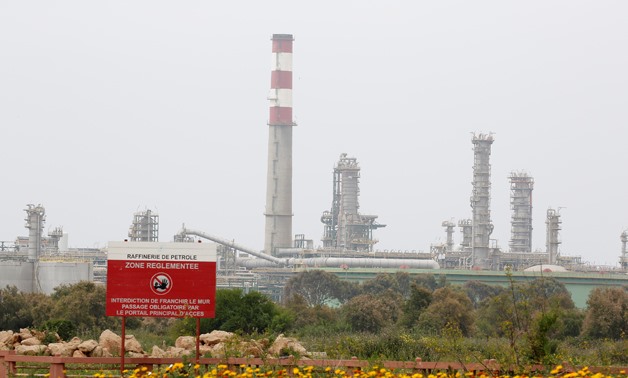
A general view shows the Samir oil refinery in Mohamadia, Morocco, April 28, 2018. Picture taken April 28, 2018. REUTERS/Youssef Boudlal
SINGAPORE - 27 June 2018: Oil prices rose on Wednesday as a supply disruption in Canada tightened the market and after U.S. officials told importers to stop buying Iranian crude from November.
Uncertainty over Libyan exports also supported crude, traders said.
Brent crude futures LCOc1 had climbed 61 cents, or 0.8 percent, from their last close to $76.92 per barrel by 0650 GMT.
U.S. West Texas Intermediate (WTI) crude futures CLc1 were at $70.88, up 35 cents, or 0.5 percent.
The United States demanded all countries stop imports of Iranian oil from November, a State Department official said on Tuesday.
Oil markets did not react more strongly to Washington’s pressure as the move was expected.
In addition, top exporter Saudi Arabia plans to raise output to make up for lost supplies.
“It is very unlikely the U.S. will succeed in ending Iranian oil sales on this timetable, but we are increasing our estimate of oil likely to come off the market by November to about 700,000 barrels per day (bpd) — another bullish factor for prices,” said risk consultancy Eurasia Group.
During the last round of sanctions, which ended in 2016, several Asian countries received waivers from Washington allowing them to continue to import from Iran.
This time, Washington already hinted when announcing renewed sanctions in May that it was unwilling to grant waivers.
And while Tokyo and Seoul said on Wednesday they were still hoping to receive waivers from Washington, Japanese and South Korean buyers have already started dialing back purchases.
TIGHT MARKET
Beyond looming sanctions, other threats to supply are keeping markets on edge.
In Libya, a power struggle between the official government and rebels has left it unclear who will handle the country’s large oil exports, although as of Tuesday the oil ports of Hariga and Zueitina in eastern Libya were working normally.
In North America, a supply outage at Syncrude in Canada has locked in 350,000 bpd of crude, with repairs expected to last at least through July.
Stephen Innes of futures brokerage OANDA said the outage had contributed to a major draw in U.S. crude oil inventories.
The American Petroleum Institute (API) on Tuesday reported a 9.2 million barrel reduction in U.S. crude inventories in the week to June 22 to 421.4 million barrels.
Trying to make up for disrupted supply, the Organization of the Petroleum Exporting Countries (OPEC) said late last week it would increase output.
Top exporter and de-facto OPEC leader Saudi Arabia plans to pump a record 11 million bpd in July, up from 10.8 million bpd in June.
Despite this, French bank BNP Paribas said the “agreement to elevate output still leaves production restraints in place, limiting the market’s ability to rebuild inventories.”
“Considering significant future supply losses faced by Iran (under U.S. sanctions) and supply risks in Venezuela and Libya ... oil fundamentals still remain favorable for oil prices to rise over the next 6 months despite the OPEC+ decision,” BNP said.


Comments
Leave a Comment